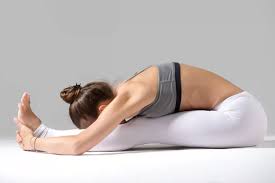
Back pain has become a common complaint in today’s fast-paced world, especially with long hours of sitting in improper postures, bending over, or lifting heavy objects. If your back pain is making even simple tasks like sitting or standing tough, yoga can be a gentle yet effective way to ease the discomfort.
Here are 6 yoga poses that provide instant relief for back pain and help strengthen your back for long-term wellness:
1. Cat-Cow Pose (Marjaryasana-Bitilasana)
Why it helps: This gentle flow between arching and rounding the back improves spinal flexibility, relieves tension, and increases blood circulation in your back muscles.
How to do it:
· Start on your hands and knees in a tabletop position.
· Inhale as you arch your back, lifting your chest and tailbone (Cow Pose).
· Exhale as you round your spine towards the ceiling, tucking your chin to your chest (Cat Pose).
· Repeat for 8-10 rounds.
2. Child’s Pose (Balasana)
Why it helps: A deeply relaxing pose that stretches the lower back, hips, and thighs while calming the nervous system.
How to do it:
· Kneel on the floor, touch your big toes together, and sit back on your heels.
· Lower your torso forward, extending your arms in front or resting them by your sides.
· Hold for 1-3 minutes, breathing deeply.
3. Downward-Facing Dog (Adho Mukha Svanasana)
Why it helps: This pose stretches your entire back, shoulders, and hamstrings, relieving stiffness and improving posture.
How to do it:
· Start in a plank position, then lift your hips towards the ceiling.
· Keep your hands shoulder-width apart and feet hip-width apart.
· Try to straighten your legs and lengthen your spine.
· Hold for 30 seconds to 1 minute.
4. Cobra Pose (Bhujangasana)
Why it helps: Strengthens the muscles of your lower back, improves spinal flexibility, and counteracts the effects of prolonged sitting.
How to do it:
· lie face down with your hands under your shoulders.
· Slowly lift your chest off the ground, using your back muscles (not pushing too hard with your hands).
· Keep your elbows slightly bent and shoulders relaxed.
· Hold for 15-30 seconds, then release.
5. Sphinx Pose
Why it helps: A gentle backbend that strengthens the spine and opens the chest, relieving lower back pain.
How to do it:
· lie on your stomach, place your elbows under your shoulders, and forearms flat on the floor.
· Lift your chest while keeping your pelvis grounded.
· Hold for 30 seconds to 1 minute.
6. Seated Forward Bend (Paschimottanasana)
Why it helps: Stretches the entire back of your body, including your spine and hamstrings, which can reduce back tension and pain.
How to do it:
· Sit with your legs extended straight in front of you.
· Inhale and lengthen your spine; exhale and fold forward from the hips.
· Reach for your feet or shins without rounding your back.
· Hold for 30 seconds to 1 minute.
Tips for Practicing yoga Safely with Back Pain
· Move slowly and mindfully—never push into pain.
· Use props like yoga blocks or blankets to support your body if needed.
· Consult a healthcare provider before starting if you have severe or chronic back issues.
· Consistency is key; practice these poses regularly for best results.
Conclusion
Incorporating these six yoga poses into your daily routine can bring instant relief and long-term strength to your back. Whether your pain is due to poor posture, heavy lifting, or sitting too much, these stretches can make a noticeable difference.
Disclaimer:
The views and opinions expressed in this article are those of the author and do not necessarily reflect the official policy or position of any agency, organization, employer, or company. All information provided is for general informational purposes only. While every effort has been made to ensure accuracy, we make no representations or warranties of any kind, express or implied, about the completeness, reliability, or suitability of the information contained herein. Readers are advised to verify facts and seek professional advice where necessary. Any reliance placed on such information is strictly at the reader’s own risk.




 click and follow Indiaherald WhatsApp channel
click and follow Indiaherald WhatsApp channel